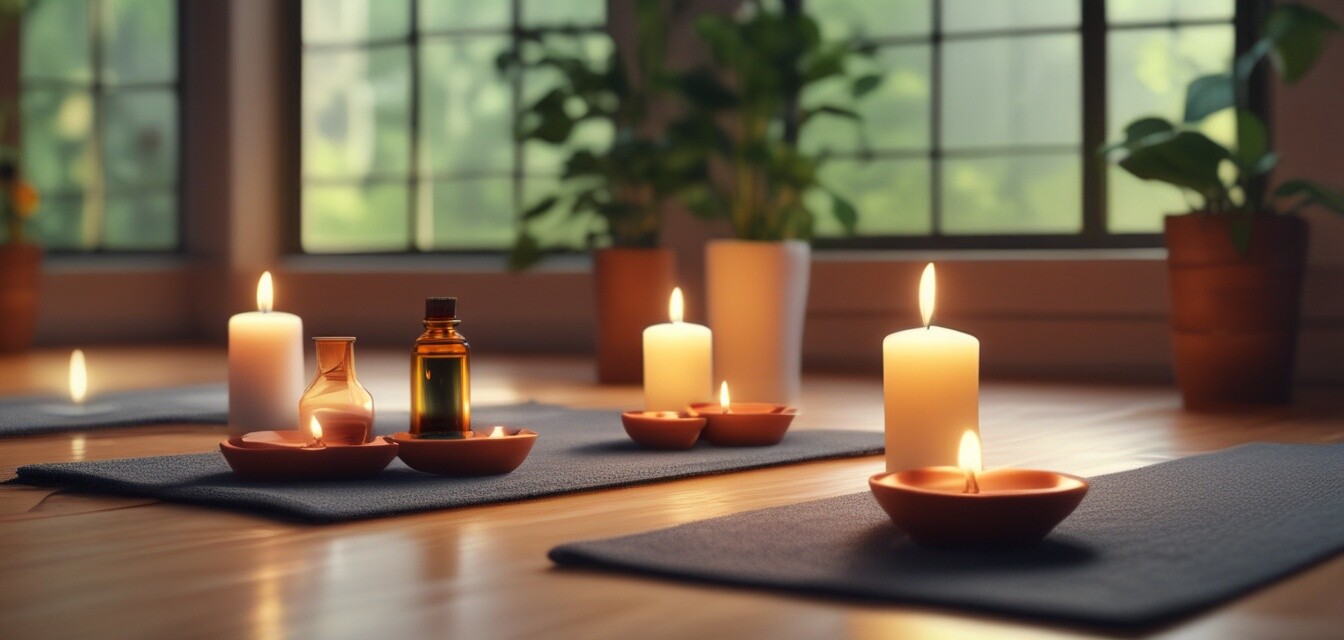
Integrating Yoga with Aromatherapy
- Aromatherapy can enhance the yoga experience by promoting relaxation and mindfulness.
- Different essential oils can offer various calming effects.
- Combining yoga with aromatherapy can lead to improved mental clarity and emotional balance.
- Creating a dedicated space for yoga and aromatherapy can enhance the practice.
- Incorporating essential oils can be done through diffusers, topical applications, or inhalation techniques.
Yoga and aromatherapy share a common goal: to promote relaxation, mindfulness, and overall well-being. When combined, they can create a transformative experience that enhances both physical and mental wellness. In this article, we'll explore the synergies between these practices, how to effectively integrate them, and the various essential oils that pair well with yoga.
The Benefits of Combining Yoga and Aromatherapy
The integration of aromatherapy into yoga routines provides numerous benefits, both physically and mentally. Here are some of the key advantages:
- Enhanced relaxation: Aromatic essential oils can create a calming environment, allowing for deeper relaxation during yoga sessions.
- Mindfulness: The scent can help center your focus, promoting mindfulness throughout your practice.
- Reduced stress: Many essential oils are known for their stress-relieving properties, which can complement slow, deep breathing techniques used in yoga.
- Improved breathing: A pleasing aroma can enhance nasal passages and promote easier breathing during poses.
Choosing the Right Essential Oils for Yoga
Not all essential oils will suit everyone, as each individual's response to scents can vary. Below is a table summarizing some popular essential oils that pair well with yoga practices:
| Essential Oil | Description | Best Used In |
|---|---|---|
| Lavender | Promotes relaxation and can soothe the mind. | Difficult poses and cool-down sessions. |
| Peppermint | Invigorating scent that can enhance mental clarity. | In the morning sessions for a refreshing start. |
| Frankincense | Calming and grounding, aids in meditation. | Meditative poses and breathing exercises. |
| Chamomile | Known to calm the nerves, helpful for anxiety. | Restorative yoga and relaxation. |
| Tea Tree | Refreshing scent that can clear the mind. | Detoxifying sessions and breathing practices. |
How to Incorporate Aromatherapy into Your Yoga Routine
Integrating aromatherapy into your yoga practice can be simple and rewarding. Here are some effective methods:
- Diffusing essential oils: Use a diffuser in your yoga space to fill the room with your chosen scent before you start.
- Topical application: Mix essential oils with a carrier oil and apply them to pulse points before starting your session.
- Inhalation techniques: Inhale directly from the essential oil bottle or place a few drops on a tissue and breathe deeply.
- Aromatic yoga gear: Use yoga mats or cushions infused with essential oils.
Creating a Dedicated Yoga and Aromatherapy Space
Designing a cozy yoga space can further enhance your experience with aromatherapy. Here are some tips to create your ideal environment:
- Lighting: Soft, warm lighting can help create a soothing atmosphere.
- Clutter-free area: Ensure your space is tidy to promote relaxation and tranquility.
- Incorporate plants: Having greenery can complement the scents of essential oils.
- Comfortable cushioning: Use yoga mats or bolsters that are comfortable and inviting.
Additional Resources for Your Practice
For more information on improving your wellness with various products, check out these pages from our site:
- Aromatherapy Products
- Herbal Remedies
- Massage Oils and Tools
- Relaxation and Sleep Aids
- Wellness Supplements
Pros
- Enhances relaxation during yoga sessions
- Promotes a deeper connection to breath and body
- Can improve emotional balance
Cons
- Some may have sensitivities to certain scents
- It may not be suitable for all yoga styles
Conclusion
Integrating yoga with aromatherapy can significantly enhance your overall practice. By understanding the various essential oils and how to use them, you can create a more immersive experience that promotes relaxation and mindfulness. Remember to listen to your body and choose scents that resonate with you personally. Happy practicing!
